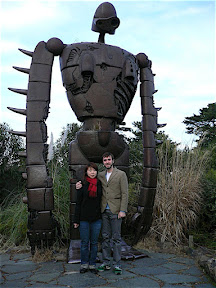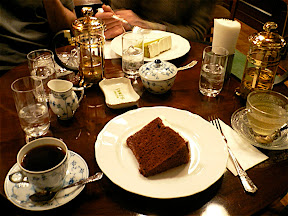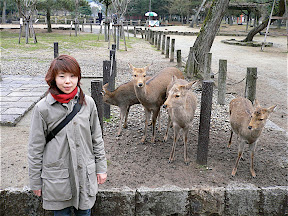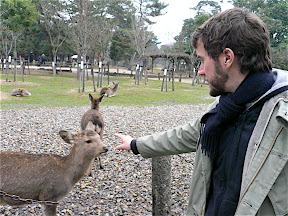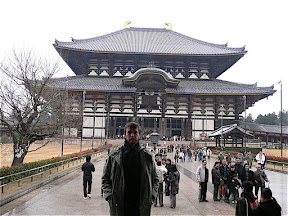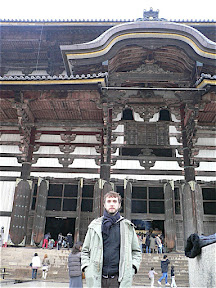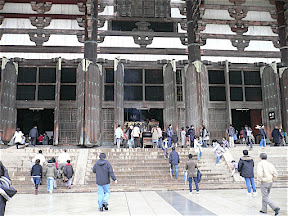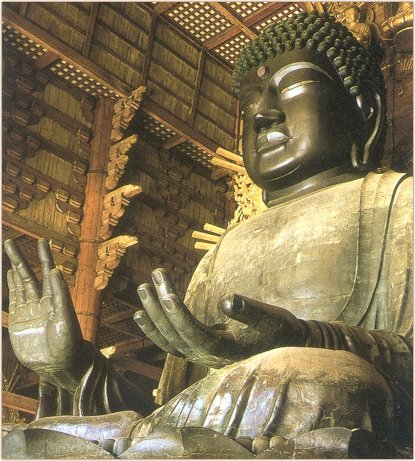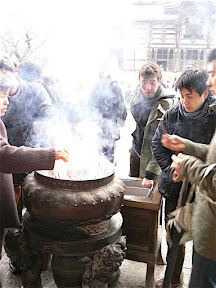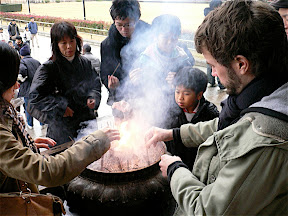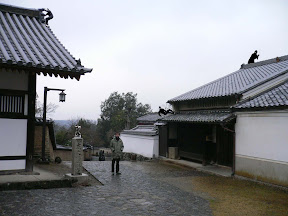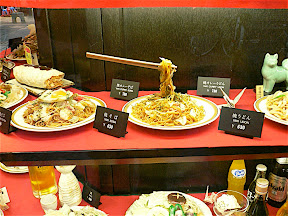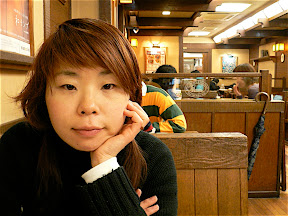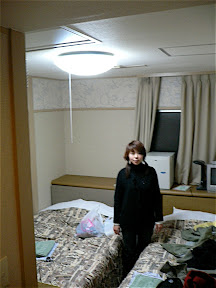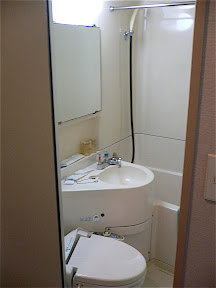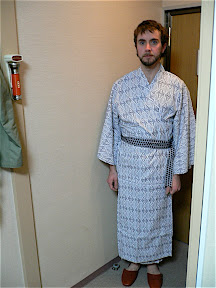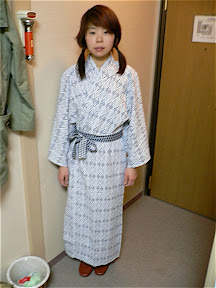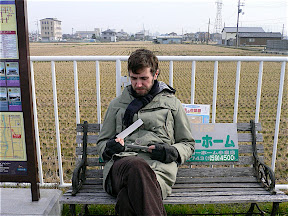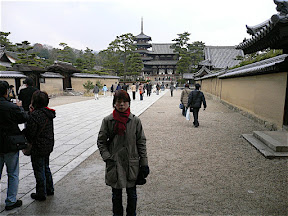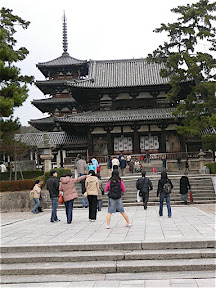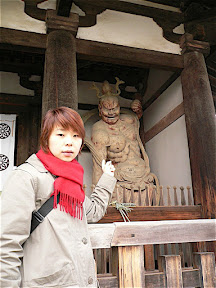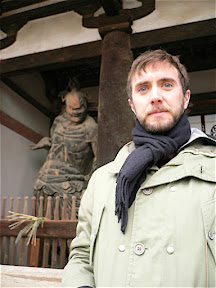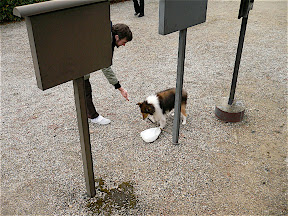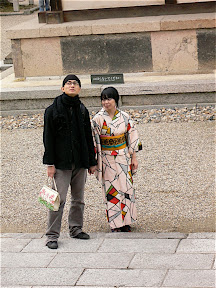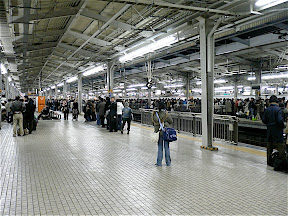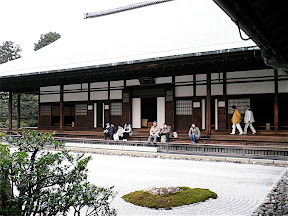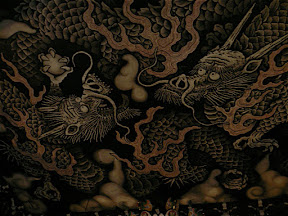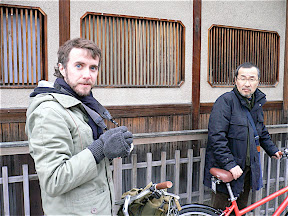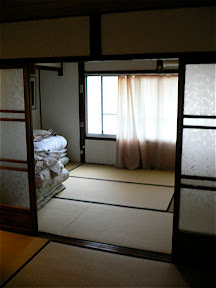New stuff added from Kyoto! Scroll down!
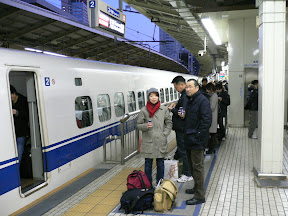
Waiting for the train in Kyoto.
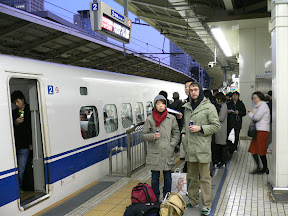

On the train. It's a "Shinkansen", one of the bullet trains. Not the fastest one, but still pretty fast. Feels like an airplane.
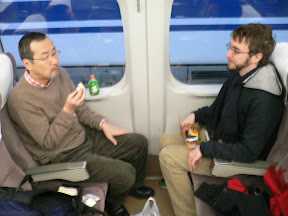
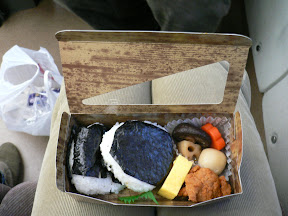
A hastily acquired breakfast from the station.
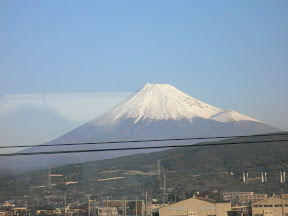
Mt. Fuji from the train.

Again.
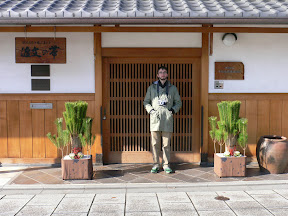
Waiting for the key to our place in Kyoto.
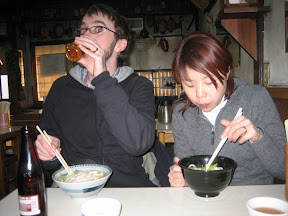
At a local noodle shop in Kyoto.
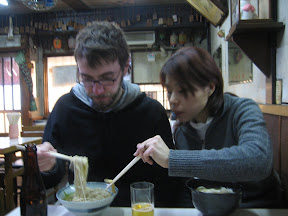
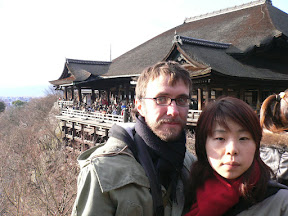
On the deck a Kyomizu temple.
Having my Fortune Read at a
Kiyomizu Temple in Kyoto.
Tying my fortune to the fortune rack at Kyomizu.
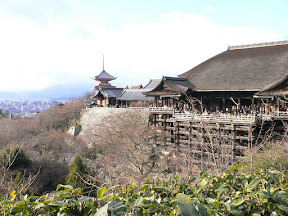
More Kyomizu.
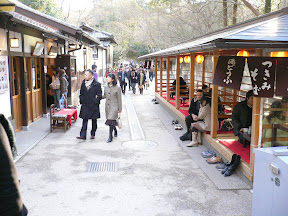
Cafe down the hill from Kyomizu.
This is a spot at the temple where three streams of water pour down from overhead. Your supposed to take a cup on a long stick and fill the cup to drink.
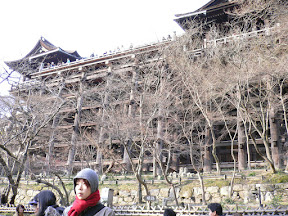
From below.
Walking back to the entrance of Kyomizu.
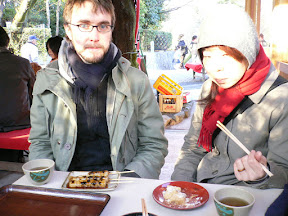
Snacks outside Kyomizu.

The pagoda at Kyomizu.
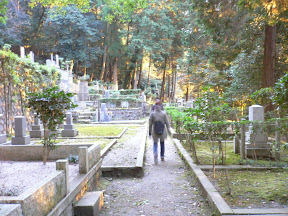
Visiting the graveyard of a friend.

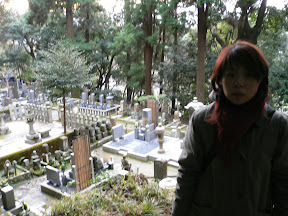
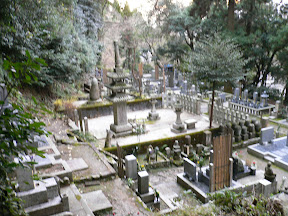
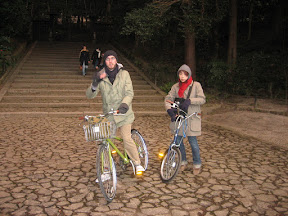
On bikes in Kyoto outside of the graveyard where we visited the grave of a friend.
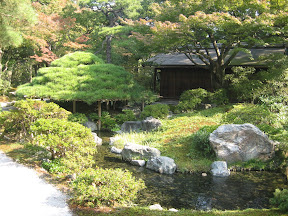
In Kyoto somewhere.
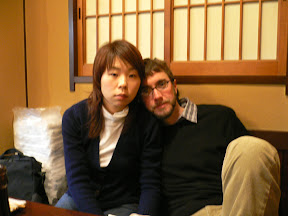
Dinner at a local Okonomiyaki (Japanese Pancake) place. We were the only people there who didn't know everyone else.
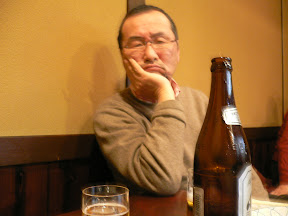
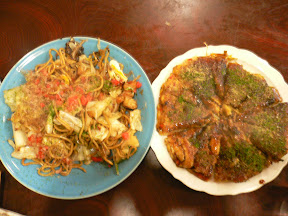
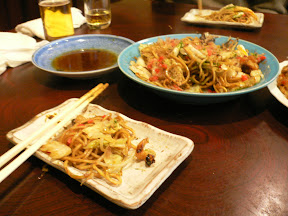
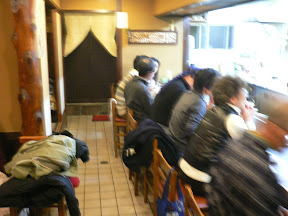
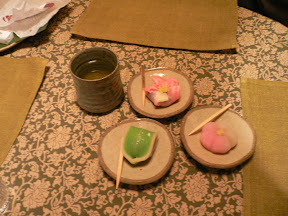
Our desert was a Kyoto specialty - red bean paste in rice flower creations - very beautiful. It's soft and sweet.
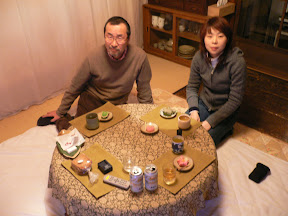
We picked it up from a store and ate at the house we rented there.
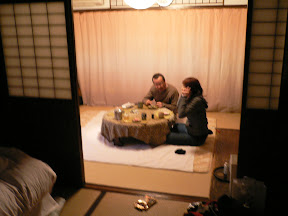
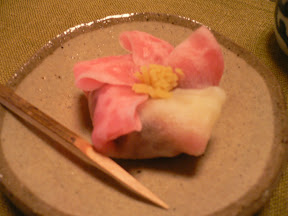
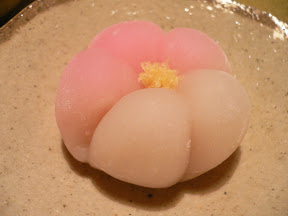
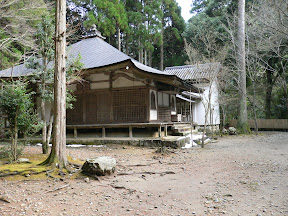
At
Kozanji Temple.

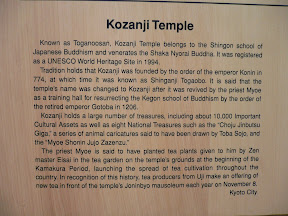
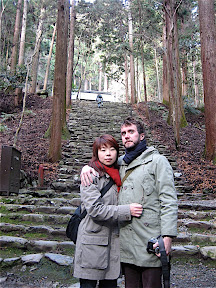
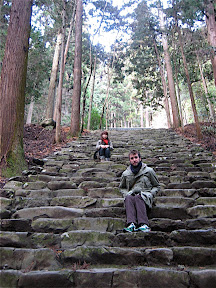
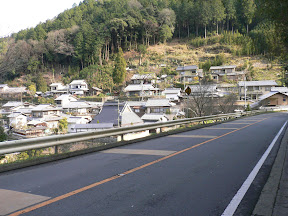
Kozanji was way up in the hills of Kyoto. To get there we passed adorable hill neighborhoods. It was incredibly quiet.
A view of the hills outside Kyoto from the bus.
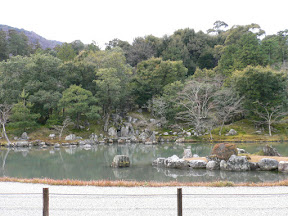
at a temple.
At one of the temples, I'm not sure which one.
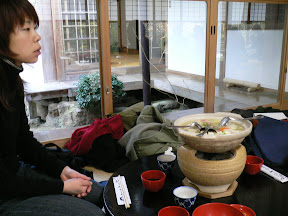
Lunch at a temple. Yudofu - tofu and vegetables in broth.
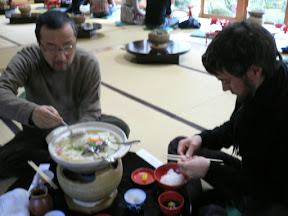
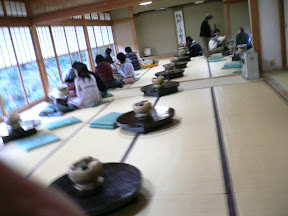
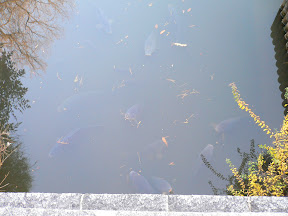
BIG goldfish/carp in the pond at the temple.
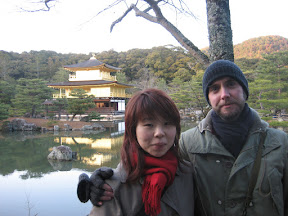
In front of the Golden Pavillion. Real gold.
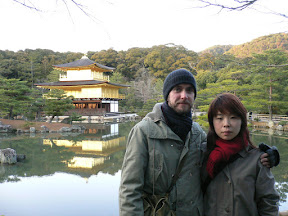
Golden Pavillion again.
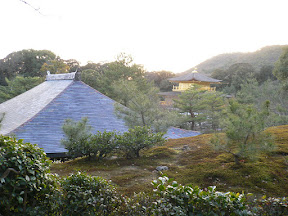
Momo ringing a huge bell on the hill on New Years at Honenin temple in Kyoto. This is after we ate celebratory soba noodles with the congregation.
New Years food vendors outside of a shrine. Not unlike a state fair or street festival.
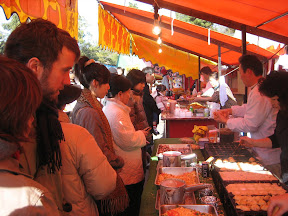
Food vendors outside of a Shrine.
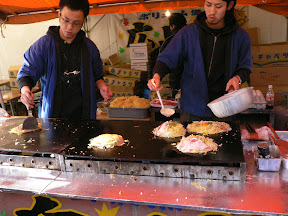
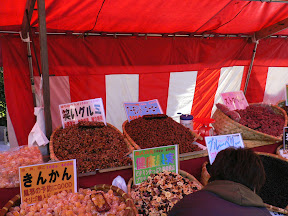
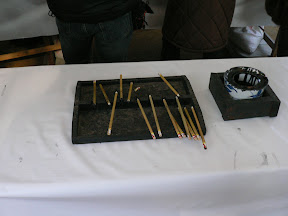
Brushes and ink to write you wishes on wood to hang at the shrine.
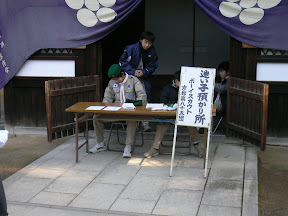
Japanese boy scouts man a station to reconnect lost kids with parents.
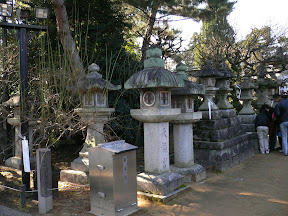
More shrine.
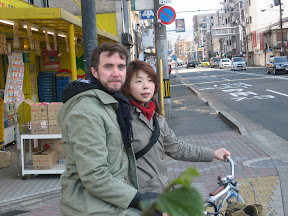
On bikes in Kyoto.
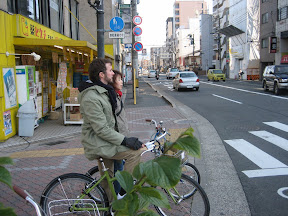
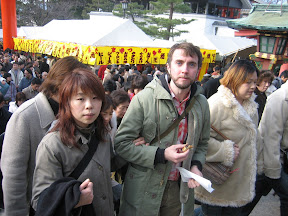
Walking up to Fushimi Inari shrine. We heard on the news that 1 Million people visited the shrine ON THIS DAY ALONE.
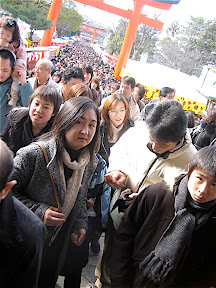
A portion of that million.
In the streets outside of the Fushimi Inari Shrine.
Outside the shrine as well, but you see these people all over Japan. They are Christians who proselytize by way of taped recordings through loudspeakers at the top of yellow banners.
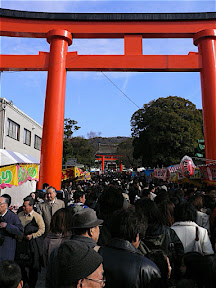
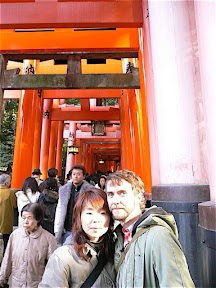
The
Fushimi Inari shrine is famous for its multitude of orange gates. I believe there's over a thousand of them. You walk through them like tunnels as they wrap around the mountain, with various stops in between. It's like an amusement park.
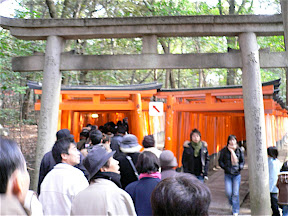
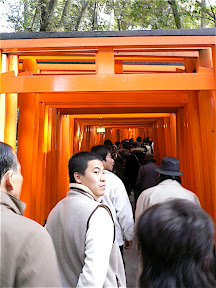

You can buy pieces of wood in the shape of a fox's head (foxes guard shrines and are the symbol of this particular shrine) and write your wish for the year on them. They're then hung at the shrine, possibly to be burned later for good luck.
Throw some coins into the box, ring the bell (attached to the long ribbon) and clap to wake up the god in the shrine.
Water to wash your hands and drink to purify the self before entering the gates.

The fox statues guard the gates. The foxes are called "kitsune", which is a kind of tofu. People are supposed to leave offerings of the sweet, fried tofu for the foxes or they will appear in the form of a beautiful woman and trick people.
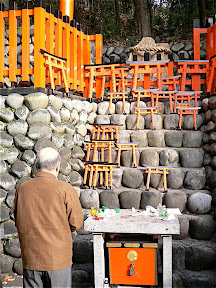
Little gates.
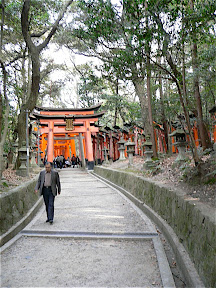
We gave up after a few gate tunnels (they wind all over the mountain, probably for a couple of miles) and took this road back to the entrance.
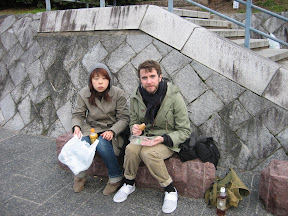
Eating lunch by the river.
Birds on the river.


